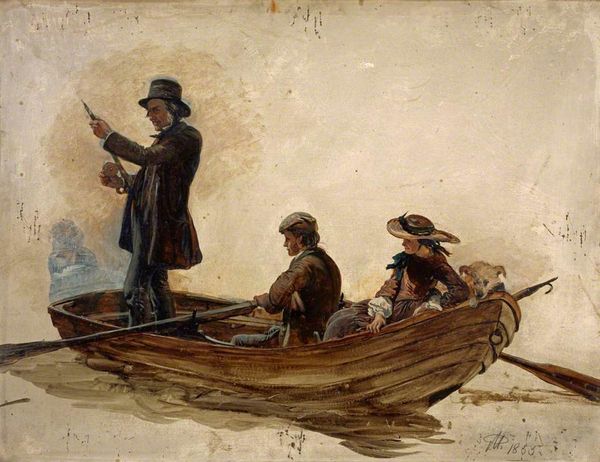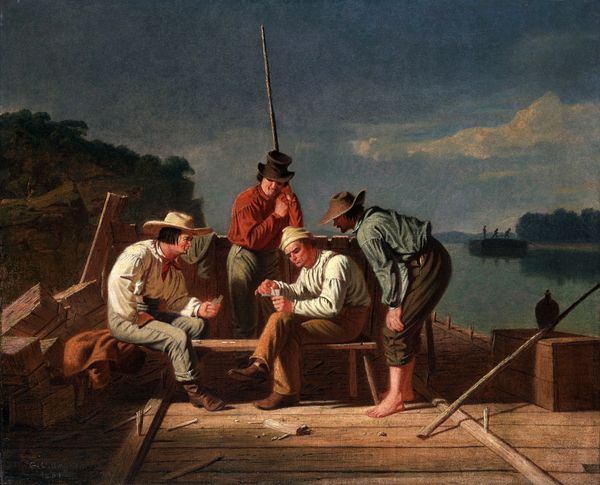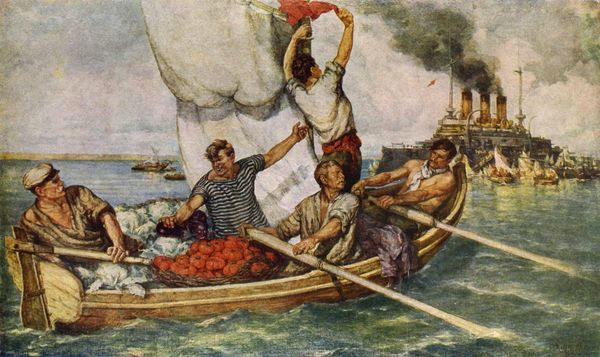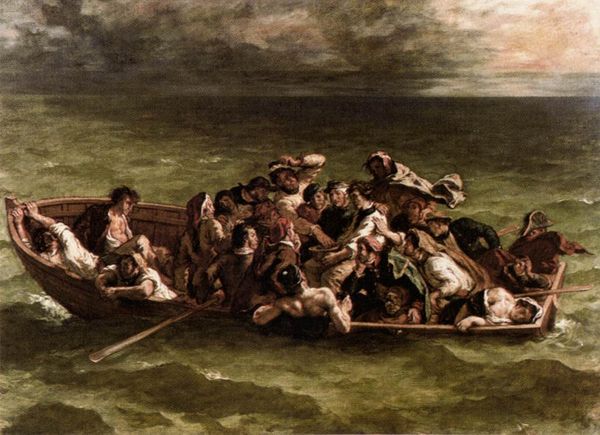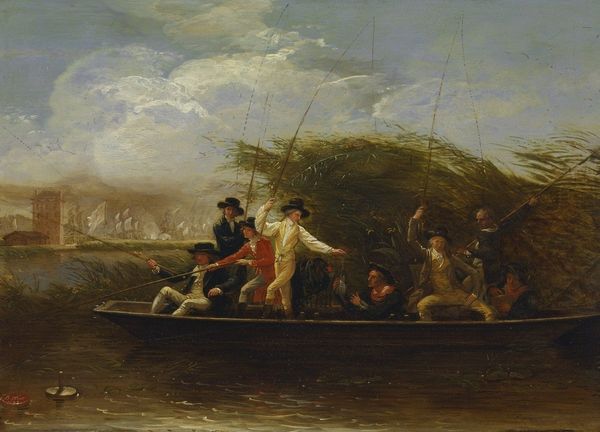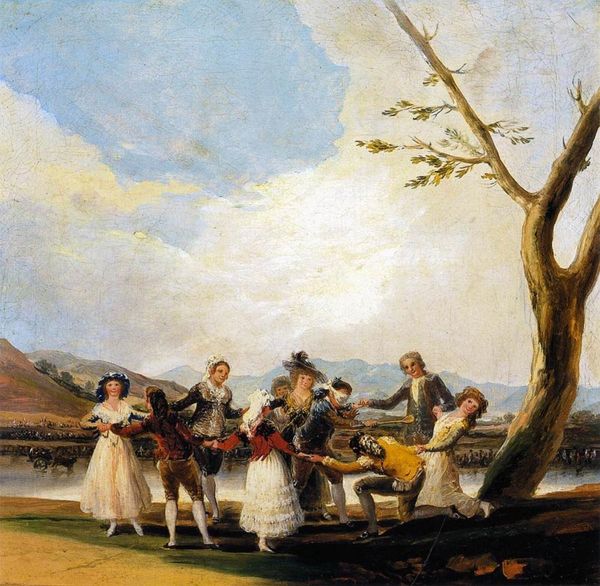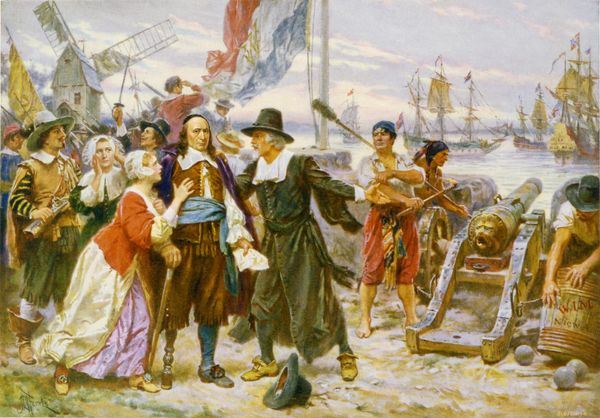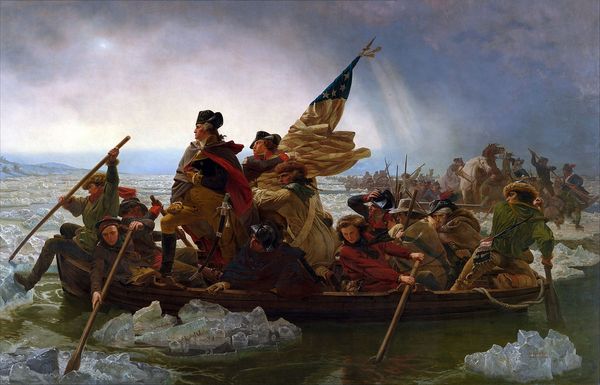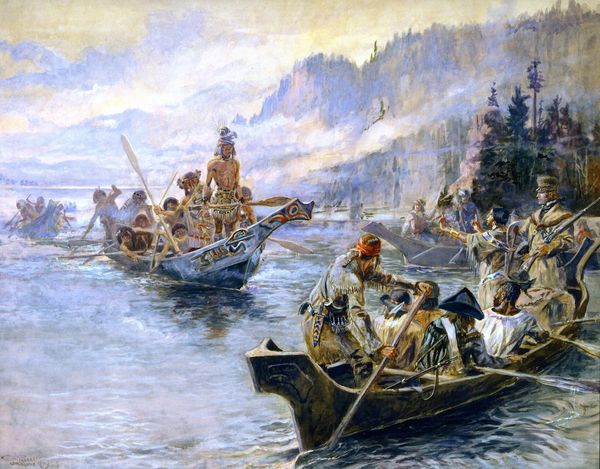
Copyright: Public domain
Editor: Here we have "The Duck Hunt," a gouache painting by Pietro Longhi, from 1760. There's a strange calmness to the scene despite the man aiming his bow; the subdued colours lend to that feeling. How do you interpret this work? Curator: Looking at "The Duck Hunt" through a materialist lens reveals much about Venetian society in the 18th century. We must consider Longhi’s application of gouache—a less costly medium compared to oils—and his impasto technique, which creates texture. What social class would commission such work and what function might it have served? Editor: Well, with a wealthy gentleman leading the hunting party in a fancy red coat, it likely depicts the leisure activities of the aristocracy? It suggests they could afford to spend their time—and resources—on this type of sport. Curator: Precisely. The tools of the hunt, the gondola, even the clothing, are commodities reflecting the merchantile trade within Venice. The labour required to produce the artist’s materials also reveals global networks. This wasn’t simply art for art's sake; it’s bound up in economic realities. Consider where Longhi sources the pigments themselves. Are these materials exclusive to the Venetian trade routes at this time? Editor: That's a really interesting way to frame it; the production aspect never even occurred to me! Curator: It encourages us to look beyond aesthetics and acknowledge the social and economic infrastructures interwoven with art creation. This approach helps uncover layers of meaning otherwise missed. Editor: It certainly adds a lot more complexity to this seemingly simple scene. Now, when I look at it, I see a whole network of commerce and labour that was previously invisible! Curator: That's the goal, isn't it? To see beyond the surface.
Comments
No comments
Be the first to comment and join the conversation on the ultimate creative platform.


